
Citroën DS3 Hatchback review

At a glance
| Price new | £12,730 - £23,220 |
|---|---|
| Used prices | £910 - £6,025 |
| Road tax cost | £0 - £255 |
| Insurance group | 9 - 27 |
Get an insurance quote with

|
|
| Fuel economy | Not tested to latest standards |
| Range | 443 - 824 miles |
| View full specs for a specific version | |
Available fuel types
Petrol
Diesel
Pros & cons
- Genuinely great to drive
- High-quality feel
- Low running costs
- Lacks the image of a MINI
- Older diesels fall foul of ULEZ
- A rare find compared with rivals
Citroën DS3 (10-15) rivals
Overview
The Citroen DS3 marked the first step towards the launch of the premium brand DS, which draws on Citroen heritage but started as a way of highlighting sportier bodystyles. The emphasis on style and personalisation was supported by a focus on performance and driver appeal; the DS3 is probably the best of that first wave.
As a used buy over a decade after it tried to bring French fashion to British drivers at an affordable price, it’s not a bad looking small car. The sharkfin-shaped mid-pillar has remained part of the DS brand identity even on the latest DS 3, and the overall shape is much slicker than the more sedate five-door C3 on which it is based.
The DS3’s C3 origins aren’t a bad thing (the Citroen C3 Mk2 is an excellent used buy in its own right) but there’s a catch, thanks to one part that began life far from Citroen’s drawing boards.
Citroen DS3 (2010-2015) buying guide
The ‘DS’ badge reflects Citroen’s glory days when it built armadillo-shaped super saloons with hydro-pneumatic suspension that wafted and wallowed with a sense of occasion that no other manufacturer could match. The DS3 has nothing in common with those cars, it merely revives a name that commanded so much affection.
Finding a car that suits your style is important whether you’re buying new or used. For this size of car you might be considering a DS3 against a MINI hatchback or Fiat 500. Unlike those, the DS3 isn’t a retro model with a predetermined image – but it is similar in that it has a colourful and design-lead cabin, involving, fun handling and higher quality materials inside.
New petrol engines earned praise, but the real star was the 1.6-litre HDi diesel. Bang on trend, it met the demands of buyers for performance and economy and of regulators for low CO2. 2013-on diesel DS3s generally meet Euro 6 so are a good place to look for ULEZ or clean air zone friendly economy – look to the facelifted 2016 DS 3 to remove all doubt.
The DS3 range was sold alongside the five-door C3, and did not sell in the same numbers as its three-door rivals. It’s hard to find for sale in dealers, so most DS3s will be private sales and if bought well, a bit of a bargain.
Overall, the DS3 marked a return to style and quality that seasoned used-Citroen buyers (or more accurately, seasoned used car buyers who won’t consider Citroens) would not associate with the brand. It feels as good as – in some places better than – a contemporary Volkswagen Polo or SEAT Ibiza.
Citroen DS3 known faults and common problems
Although the Citroen DS3 only went off sale in 2019 (in facelifted form) it’s not a common car – the MINI and Fiat outnumber it 10 to one when looking at more recent cars for sale. Check the MOT history before enquiring if you can, make sure you look though the service records for completed recalls as well as maintenance, and get a valuation beforehand to make sure you’re paying the right price for your potential purchase.
When looking at a potential purchase bear in mind the Citroen DS3 was a popular car for driving schools, and given the number for sale through small ads get some tips for avoiding scams.
1. DS3 ‘Prince’ petrol engines – 1.4 and 1.6-litre VTi and THP
Replacing the trusty TU-series, and inheriting some basic foundations from it, the Prince engine was co-developed with BMW. Technology such as turbocharging, variable valve timing and sophisticated direct injection fuelling put the DS3 at the cutting edge of small cars at the time, and the engine was also used in the MINI and some BMWs.
Unfortunately some issues familiar to BMW owners crop up. The timing chain tensioners are weak and the chains can fail, so rattling noises may be variable valve timing or chain related. Misfires are a common problem with the THP 155 and 165, usually down to coils/ignition system or fuel pressure. Early ones tend to be more fragile.
A flirtation with performance brought the limited-edition DS3 Racing to the market. It produces 207hp, and is very rare – however after the brand-separating DS 3 facelift a 210hp DS 3 Performance model was sold, and is a little easier to find.
2. DS3 diesel engines – 1.6-litre HDi, e-HDi and BlueHDi
Shared with Ford and Volvo, the DV6 1.6-litre diesels are a well-known unit and share the same problems with the technology added on to meet demands for power and controlled emissions. The turbocharger can fail if oil and coolant changes are neglected, as can the injectors.
As with all diesels of this era the DPF (diesel particulate filter) can clog if the car has been used for short trips and not allowed to regenerate, and the EGR valve can fail due to age and carbon build up but also may fail internally, leaking coolant into the intake, causing white smoke with a sweet antifreeze coolant scent, and appearing similar to a head gasket failure. Which, if neglected to the point of severe coolant loss and overheating or airlocks, will inevitably follow.
Good quality fuels, regular long, high-speed runs, and oil and filter changes more frequent than the schedule will prolong the engine’s life and keep the emissions cleaner as well. Correct oil changes involve draining from below to get as much sludge out as possible.
3. DS3 PureTech engine – 1.2-litre three cylinder
The cutting-edge PureTech engine was installed in place of the 1.4-litre initially in the rare 82hp model – best avoided if you want any semblance of performance, but not terrible. The turbocharged three-cylinder 110 and 130 replaced the 1.6 VTi options in late 2014 and are worth seeking out for the lower emissions.
The PureTech engine uses a wet timing belt that runs in oil and had some issues early on, with several recalls applicable. It’s available with the EAT6 six-speed automatic, and five or six-speed manual depending on power and year.
4. Citroen DS3 – stop/start system
Citroen were early adopters of this CO2-cutting, fuel-saving feature and the DS3 includes a few hidden parts.
Most of the time it is transparent in operation. If the car says ‘Eco mode not available’ there may be a fauly but it’s more likely that the car’s battery needs replacing. Cars that have been sitting unsold and unused for a long period, or have been used for a lot of short trips, can push an aging AGM battery to the point where the car’s ECU will disable features. It can also cause problems that at a glance, appear more serious.
It is important that the starter/alternator, belt and tensioners are in good condition.
If faults persist with a fully-charged battery then diagnostics should show any sensor problems, including detecting belt slip. There is a capacitor and ECU hidden in the front wing, called the ‘Voltage Retention Device’. This is vulnerable to damage, particularly if the wheel arch liner is lost or the car is driven into flood water
5. Citroen DS3 automatic gearbox – EGS or EAT?
Good news for anyone moving on from a previous small Citroen automatic – the DS3 does not have a SensoDrive or similar semi-auto. Two-pedal friendly DS3s pair the 1.6-litre petrol engine with a smooth (if rather old-school) four-speed automatic despite the EGS label.
Like any front-wheel drive small auto it does need regular fluid changes, and the condition of the cooler pipes and radiator is critical for longevity. If it shudders, goes into limp-home mode or is harsh to drive then it will need work on the solenoid and valve block generally, but with a good chance that a specialist will solve the problem first time.
Later cars with the 1.2-litre PureTech three-cylinder engine use the EAT6 six-speed automatic. This offers manual modes but again, is a traditional automatic rather than a robotised manual, and it is generally reliable if looked after.
6. Citroen DS3 manual gearbox, clutch and flywheel
You’ve guessed it, the DS3 has a dual-mass flywheel. Listen for clonks, squeaks and rattles, and juddering when pulling away, particularly on higher-power diesels.
When in good condition the biting point for the clutch can feel quite low and the car should be smooth to drive, with a quick, precise gear change. Five-speed gearboxes are robust, six-speed models can suffer if leaks have not been attended to, but both models share a tendency to crunch or not select reverse if rushed.
7. Suspension and steering issues
Sharing technology with a large number of PSA (now Stellantis) models the DS3’s suspension is very straightforward. Aside from anti-roll bar droplinks failing, which rattle over small bumps and clonk on sharp movements but are relatively inexpensive to fix, the biggest weakness is failing springs on the front struts.
Listen for loud bangs when steering, unpredictable clonks mid-bend, and look under the wheelarch for obviously broken coil springs.
8. Citroen DS3 Interior, gadgets and technology
Much of the interior is shared with the C3, but the DS3 got colourful dash inserts and tends to have more upmarket tech, such as in-dash colour screen naviation. Around 2016 Apple CarPlay becomes available, and features such as reversing cameras, but overall it’s a reassuringly simple setup compared with Citroen’s wilder (and less reliable) Picasso LCDs.
Bluetooth can be a little problematic with modern phones, particularly with older cars, and check features such as the scented air freshener are still present.
Make sure the climate control works – if the fan doesn’t run it’s often a failed resistor pack, but that can also burn the contacts on the wiring. Listen at idle with the air conditioning on – if there’s a rumbling from the offside front, or hissing behind the dash, it may need regassing before further damage occurs. Diagnostics and repair on Citroen’s electronics is a skilled job but a simple OBD-II code reader can verify battery and charging performance.
9. Bodywork – Citroen DS3 rust and accident damage
Bodywork usually comes first, but we’re confident that if you look at a Citroen DS3 and have checked the MOT history online for advisories, it won’t be hiding much – they are solidly made, have a 12-year anti-perforation warranty (make sure the inspections have been recorded) and have big, deformable bumpers to absorb minor taps. Any paint mismatch should be investigated (Citroen paint quality is quite good on this era) and check all the lights are working and free of condensation.
Cars from coastal locations or areas prone to harsh winters should be investicated thoroughly for rust on suspension components and front subframe, regardless of how well made the body is.
10. Is that special edition still special?
As a fashion-first car there are lots of special editions. Check that the specification of any car you are buying matches the original equipment, and bear in mind that some sticker packs, accessories or distinctively coloured interior trim pieces may not be available if they are missing or damaged.
What’s the Citroen DS3 like to drive?
Over the next few pages, we’ll review each aspect of the Citroen DS3, taking into account its practicality, comfort, fuel economy and performance. If you’re short on time, you can also skip to our verdict page to see if we recommend the Citroen DS3 as a good used car.




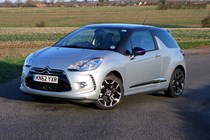
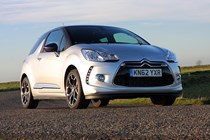
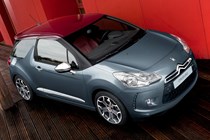
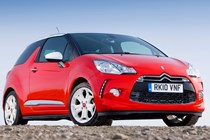
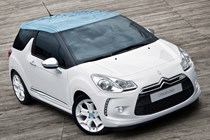
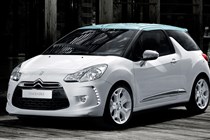
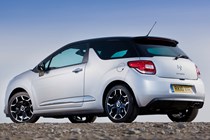
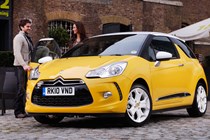
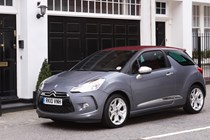
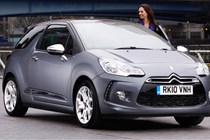
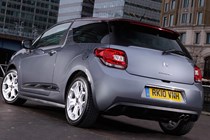
.jpg)
.jpg)
.jpg)
.jpg)
.jpg)
.jpg)
.jpg)
.jpg)
.jpg)
.jpg)
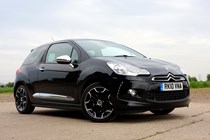
.jpg)
.jpg)
.jpg)
.jpg)
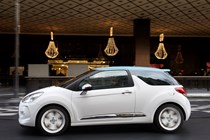
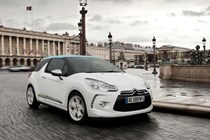
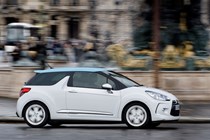
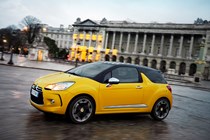
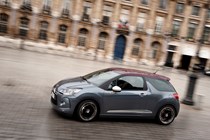
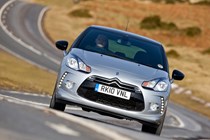
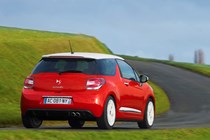
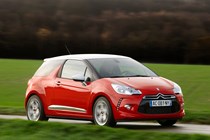

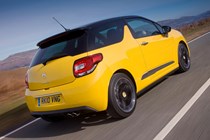
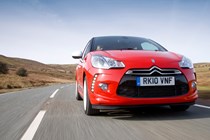
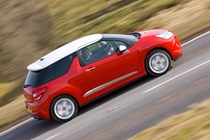
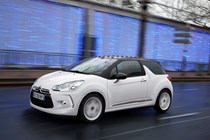
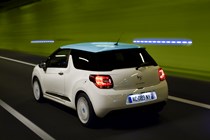
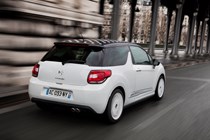
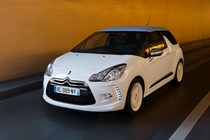
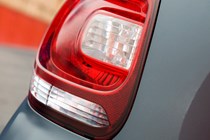
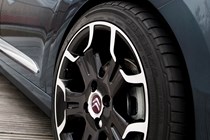
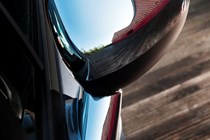
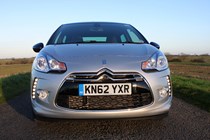
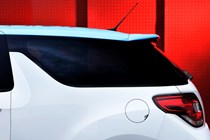
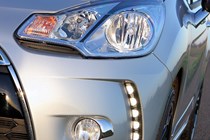
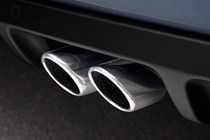
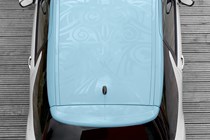
.jpg)
.jpg)
.jpg)
.jpg)
.jpg)
.jpg)
.jpg)
.jpg)
.jpg)
.jpg)
.jpg)
.jpg)
.jpg)
.jpg)
.jpg)
.jpg)
.jpg)
.jpg)
.jpg)
.jpg)
.jpg)
.jpg)
.jpg)
.jpg)
.jpg)
.jpg)
.jpg)
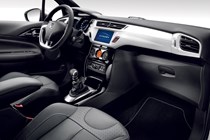
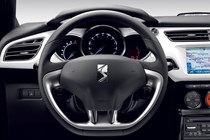
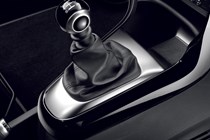
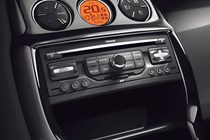
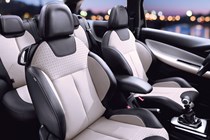
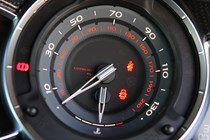
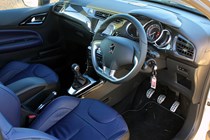
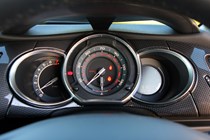
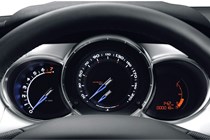
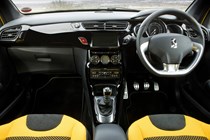
.jpg)
.jpg)
.jpg)
.jpg)
.jpg)
.jpg)
.jpg)
.jpg)
.jpg)
.jpg)
.jpg)
.jpg)
.jpg)
.jpg)
.jpg)
.jpg)
.jpg)
.jpg)
.jpg)
.jpg)
.jpg)
.jpg)
.jpg)
.jpg)
.jpg)
.jpg)
.jpg)
.jpg)
.jpg)
.jpg)
.jpg)
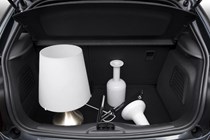
.jpg)
.jpg)
.jpg)
.jpg)
.jpg)
.jpg)
.jpg)
.jpg)
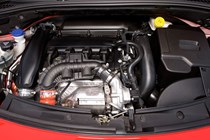
.jpg)
.jpg)
.jpg)
.jpg)
.jpg)
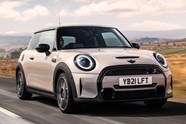
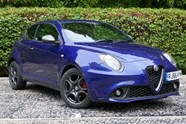
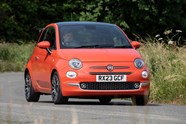













.jpg?quality=50)
.jpg?quality=50)
.jpg?quality=50)
.jpg?quality=50)
.jpg?quality=50)
.jpg?quality=50)
.jpg?quality=50)
.jpg?quality=50)
.jpg?quality=50)
.jpg?quality=50)

.jpg?quality=50)
.jpg?quality=50)
.jpg?quality=50)
.jpg?quality=50)
























.jpg?quality=50)
.jpg?quality=50)
.jpg?quality=50)
.jpg?quality=50)
.jpg?quality=50)
.jpg?quality=50)
.jpg?quality=50)
.jpg?quality=50)
.jpg?quality=50)
.jpg?quality=50)
.jpg?quality=50)
.jpg?quality=50)
.jpg?quality=50)
.jpg?quality=50)
.jpg?quality=50)
.jpg?quality=50)
.jpg?quality=50)
.jpg?quality=50)
.jpg?quality=50)
.jpg?quality=50)
.jpg?quality=50)
.jpg?quality=50)
.jpg?quality=50)
.jpg?quality=50)
.jpg?quality=50)
.jpg?quality=50)
.jpg?quality=50)










.jpg?quality=50)
.jpg?quality=50)
.jpg?quality=50)
.jpg?quality=50)
.jpg?quality=50)
.jpg?quality=50)
.jpg?quality=50)
.jpg?quality=50)
.jpg?quality=50)
.jpg?quality=50)
.jpg?quality=50)
.jpg?quality=50)
.jpg?quality=50)
.jpg?quality=50)
.jpg?quality=50)
.jpg?quality=50)
.jpg?quality=50)
.jpg?quality=50)
.jpg?quality=50)
.jpg?quality=50)
.jpg?quality=50)
.jpg?quality=50)
.jpg?quality=50)
.jpg?quality=50)
.jpg?quality=50)
.jpg?quality=50)
.jpg?quality=50)
.jpg?quality=50)
.jpg?quality=50)
.jpg?quality=50)
.jpg?quality=50)

.jpg?quality=50)
.jpg?quality=50)
.jpg?quality=50)
.jpg?quality=50)
.jpg?quality=50)
.jpg?quality=50)
.jpg?quality=50)
.jpg?quality=50)

.jpg?quality=50)
.jpg?quality=50)
.jpg?quality=50)
.jpg?quality=50)
.jpg?quality=50)